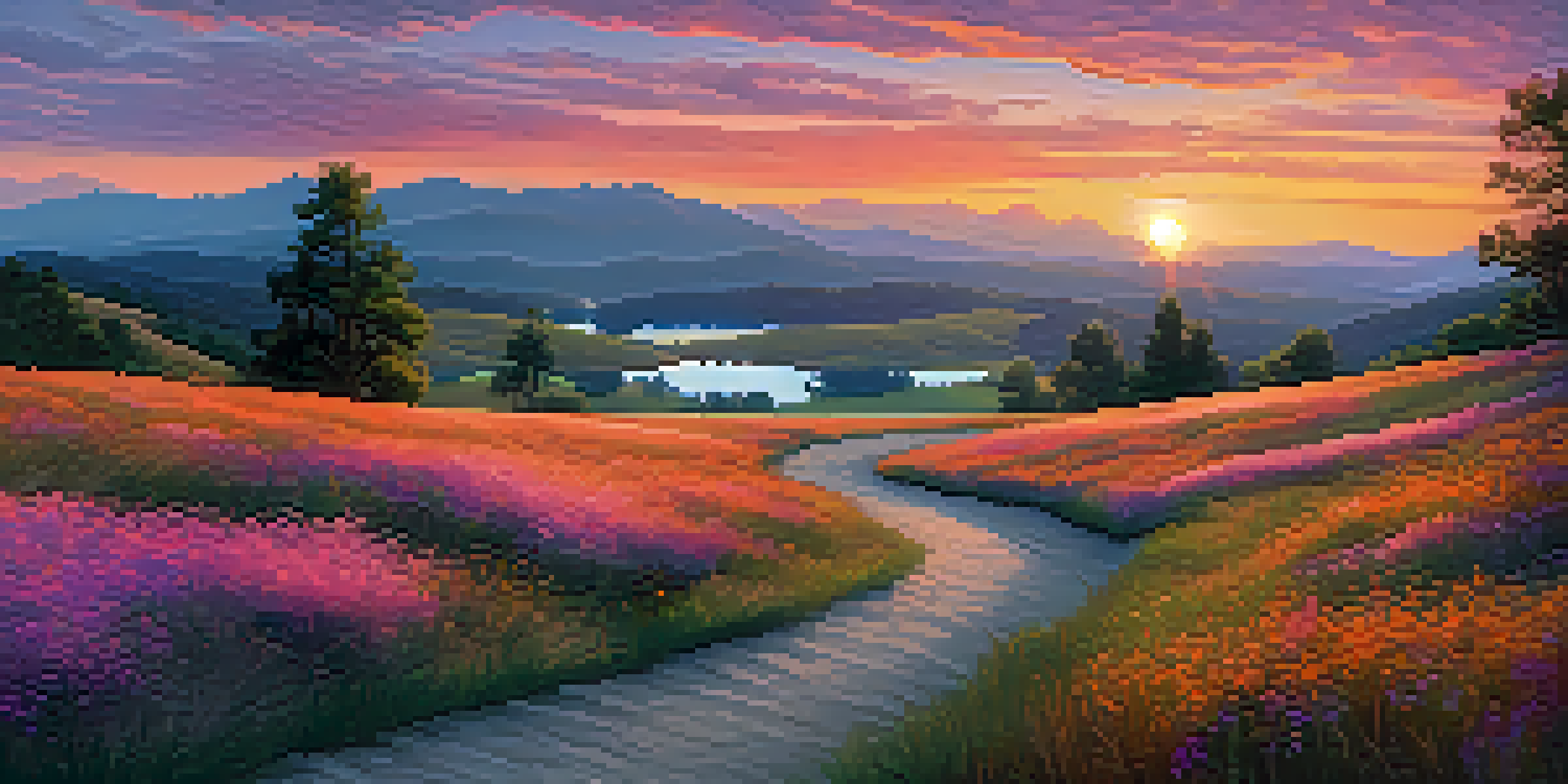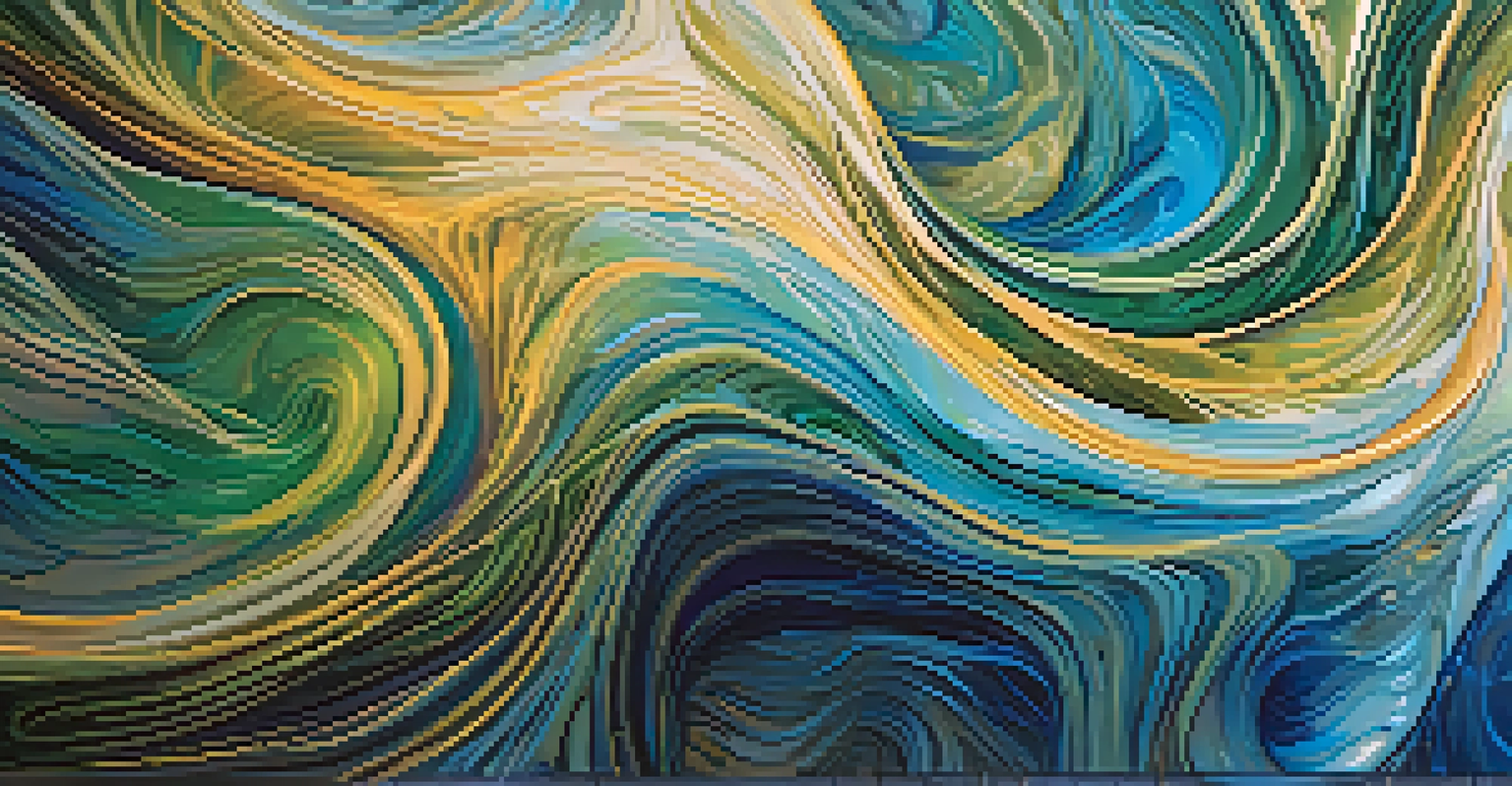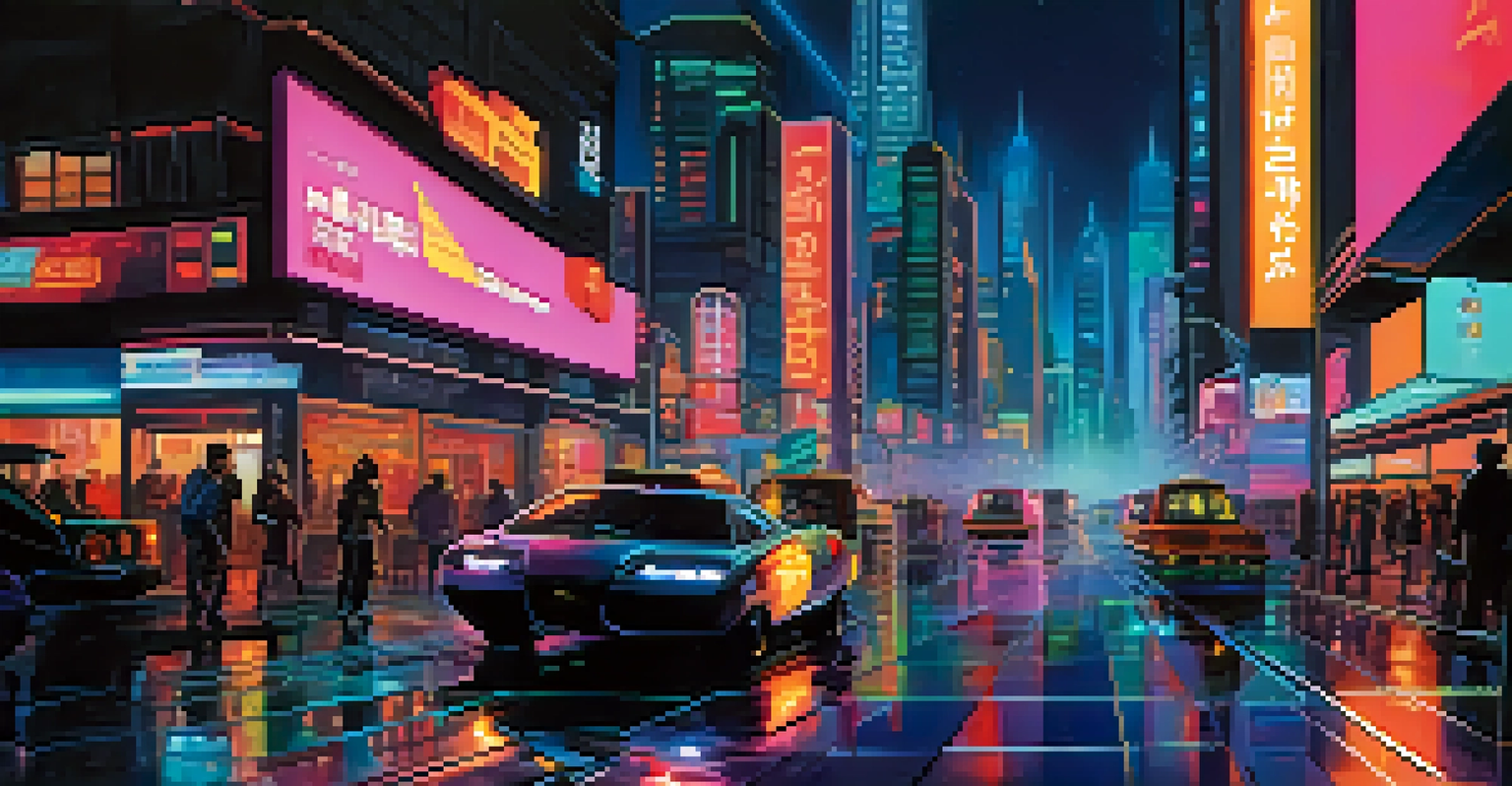Understanding Digital Art: A Deep Dive into Its Evolution

What is Digital Art? A Quick Overview
Digital art refers to artistic creations made using digital technology. This includes everything from digital painting and graphic design to 3D modeling and animation. Unlike traditional art forms that use physical mediums, digital art exists in a digital format, making it easily shareable and reproducible.
Digital art is not a separate genre, it is a form of expression that encompasses all forms of art that can be created digitally.
The rise of the internet has significantly influenced digital art. Artists can now showcase their work to a global audience, leading to a diverse range of styles and techniques. This accessibility has not only democratized the art world but has also fostered collaboration among artists from different backgrounds.
Related Resource
In essence, digital art is a versatile medium that encompasses both traditional artistic principles and modern technology. From digital illustrations to interactive installations, it offers endless possibilities for creators and captivates audiences in unique ways.
The Early Days of Digital Art: A Historical Perspective
Digital art's roots can be traced back to the 1950s and 1960s, when artists began experimenting with computers for creative purposes. Early pioneers like Frieder Nake and Harold Cohen were among the first to explore algorithmic art, creating works using computer programming languages. These initial experiments laid the groundwork for the digital art movement.

As technology advanced, so did the tools available to artists. The introduction of graphic design software in the 1980s, such as Adobe Illustrator and Photoshop, allowed artists to create more intricate and polished works. This shift changed the landscape of art, blending traditional techniques with cutting-edge technology.
Digital Art's Evolution Over Time
Digital art has transformed from early computer experiments in the 1950s to a recognized and diverse medium today.
Despite its humble beginnings, digital art started gaining recognition in the 1990s. Online galleries and digital exhibitions emerged, providing platforms for artists to showcase their work. This growing visibility played a crucial role in establishing digital art as a legitimate form of artistic expression.
Key Milestones in the Evolution of Digital Art
Throughout the years, several key milestones have defined the evolution of digital art. The introduction of high-quality graphics and animation software in the late 1990s made it easier for artists to create detailed and immersive works. This era also saw the rise of the internet as a vital tool for sharing and promoting digital art.
Technology is not just a tool. It can give artists a new way to express themselves.
In the early 2000s, the emergence of social media platforms transformed the way artists connected with their audience. Websites like DeviantArt and later Instagram provided spaces for artists to share their work, receive feedback, and build their brands. This shift not only increased visibility for individual artists but also fostered a sense of community within the digital art world.
Related Resource
Another significant milestone came with the rise of digital art marketplaces, where artists could sell their work directly to consumers. Platforms like Etsy and ArtStation have empowered creators to monetize their art and reach a wider audience, further solidifying digital art's place in the modern art landscape.
The Impact of Technology on Digital Art Creation
Advancements in technology have had a profound impact on how digital art is created. The development of powerful hardware, such as graphic tablets and high-resolution monitors, has allowed artists to work with greater precision and detail. These tools mimic traditional art techniques, offering a familiar experience for those transitioning from traditional mediums.
Additionally, the rise of artificial intelligence (AI) has opened up new avenues for creativity. AI-generated art has sparked debates about authorship and originality, challenging traditional notions of what constitutes art. Artists can now use AI as a collaborative tool, pushing the boundaries of creativity and experimentation.
Technology Shapes Artistic Creation
Advancements in technology, including AI and VR, have revolutionized how artists create and share their work.
Furthermore, virtual reality (VR) and augmented reality (AR) are reshaping the digital art landscape. These technologies provide immersive experiences, allowing viewers to interact with art in ways previously unimaginable. Artists are now exploring these mediums to create captivating installations that engage audiences on a deeper level.
The Role of Social Media in Digital Art Promotion
Social media has become a powerful tool for digital artists to share their work and connect with audiences. Platforms like Instagram, Twitter, and TikTok allow artists to showcase their creations, offering a visual portfolio that can reach millions. This instant visibility has transformed how artists market themselves and their work.
Engagement on social media can lead to opportunities for collaboration, commissions, and even gallery exhibitions. By building a personal brand online, artists can attract followers who appreciate their style and vision. This community aspect fosters support and encouragement among fellow artists and art lovers alike.
Related Resource
However, the fast-paced nature of social media can also create challenges. The pressure to constantly produce new content and maintain engagement can be overwhelming. Artists must find a balance between promoting their work and staying true to their creative process, ensuring their passion for art remains at the forefront.
Themes and Trends in Contemporary Digital Art
Contemporary digital art is marked by a diverse range of themes and trends, reflecting the complexities of modern life. Many artists explore issues such as identity, technology, and societal change, using their work as a commentary on the world around them. This engagement with current events resonates with audiences, making digital art a relevant form of expression.
One notable trend in digital art is the rise of NFTs (non-fungible tokens). These digital assets allow artists to sell their work in a way that verifies ownership and authenticity. The NFT market has sparked conversations about the value of digital art and its potential to disrupt traditional art sales models.
Social Media's Impact on Artists
Social media platforms have become essential for artists to promote their work, build communities, and secure opportunities.
Additionally, the blending of different mediums is becoming increasingly common. Artists are experimenting with mixed media, combining digital art with photography, sculpture, and traditional painting. This fusion creates unique works that challenge the boundaries of what art can be.
The Future of Digital Art: What Lies Ahead?
As technology continues to evolve, the future of digital art holds exciting possibilities. Emerging technologies like AI, VR, and AR will undoubtedly shape the way artists create and share their work. These innovations will likely lead to new forms of artistic expression that we can only begin to imagine today.
Moreover, the growing acceptance of digital art in traditional art spaces signals a shift in the art world. Museums and galleries are increasingly recognizing the value of digital art, incorporating it into their exhibitions. This validation will encourage more artists to explore digital mediums and push creative boundaries.

Ultimately, the future of digital art will depend on the artists themselves. As they adapt to new technologies and societal changes, their creativity will continue to redefine the landscape of art. With each new generation of artists, we can expect fresh perspectives and innovative approaches that will keep the world of digital art vibrant and ever-evolving.